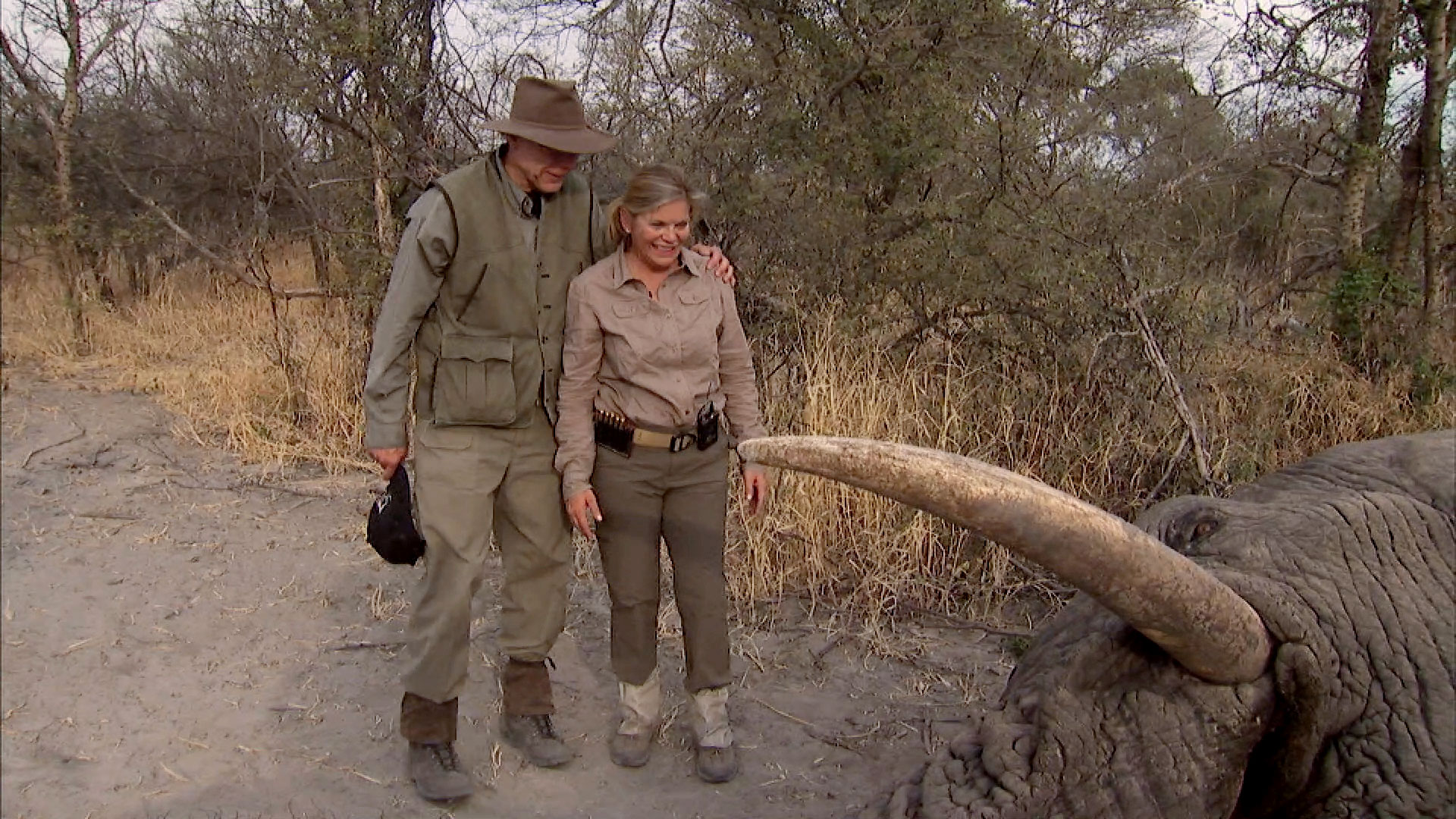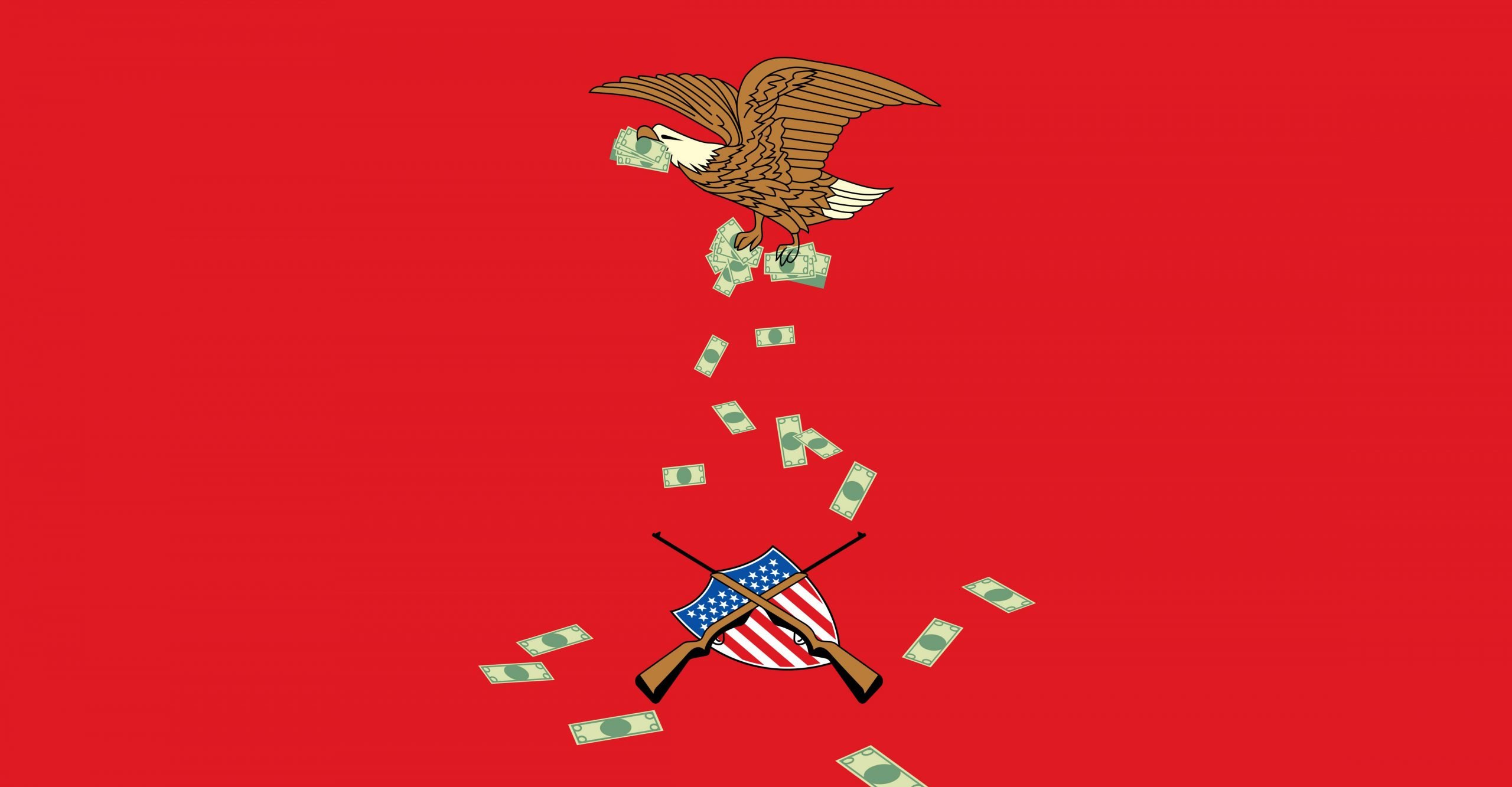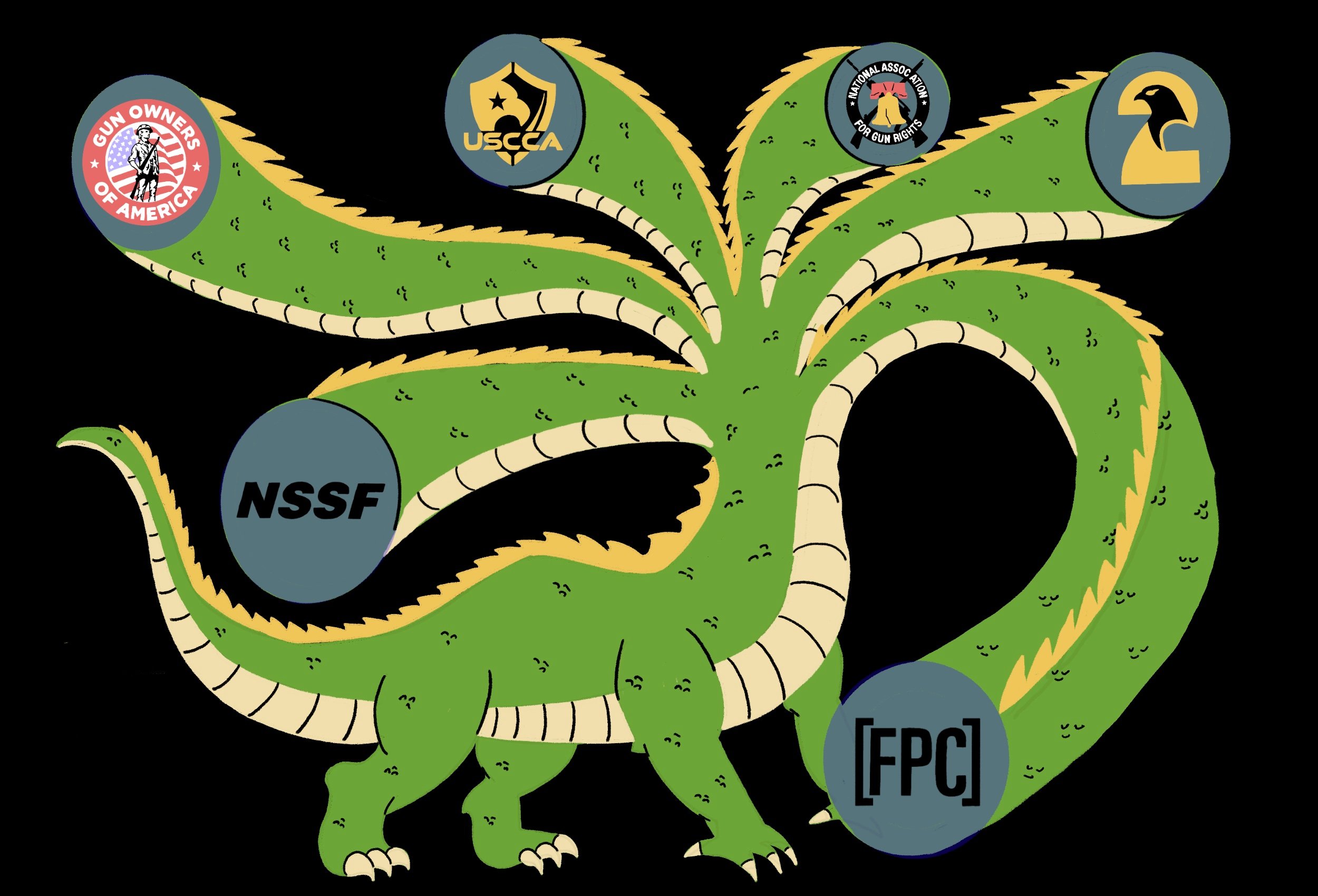After the mass shooting at Sandy Hook Elementary School in 2012, Wayne LaPierre, the head of the National Rifle Association, told Americans agitating for new gun regulations, “The only thing that stops a bad guy with a gun is a good guy with a gun.” Less than a year later, he and his wife, Susan, travelled to Botswana’s Okavango Delta, where they hoped to show NRA members that they had the grit to take on a different adversary: African bush elephants, the largest land mammals on Earth. The trip was filmed by a crew from “Under Wild Skies,” an NRA-sponsored television series that was meant to boost the organization’s profile among hunters — a key element of its donor base. But the program never aired, according to sources and records, because of concerns that it could turn into a public relations fiasco.
The Trace and The New Yorker obtained a copy of the footage, which has been hidden from public view for eight years. It shows that when guides tracked down an elephant for LaPierre, the NRA chief proved to be a poor marksman. After LaPierre’s first shot wounded the elephant, guides brought him a short distance from the animal, which was lying on its side, immobilized. Firing from point-blank range, LaPierre shot the animal three times in the wrong place. Finally, a guide had the host of “Under Wild Skies” fire the shot that killed the elephant. Later that day, LaPierre’s wife, Susan, showed herself to be a better shot than her husband. After guides tracked down an elephant for her, Susan killed it, cut off its tail, and held it in the air. “Victory!” she shouted, laughing. “That’s my elephant tail. Way cool.”
For three decades, LaPierre has led the NRA’s fundraising efforts by railing against out-of-touch “elites” and selling himself as an authentic champion of American self-reliance and the unfettered right to protect oneself with a gun. But the footage, as well as newly uncovered legal records, suggest that behind his carefully constructed everyman image, LaPierre is a coddled executive who is clumsy with a firearm, and fearful of the violent political climate he has helped create. The NRA did not respond to requests for comment.
The NRA is weathering an existential crisis, which began with revelations of rampant self-dealing first reported in 2019 and extends to an ongoing legal fight with the New York attorney general and a humiliating bankruptcy trial. Now, the video and other materials offer a glimpse of the stage-managed, insular, and privileged life of the NRA’s top official.
The footage of LaPierre in Botswana first shows him walking through the bush dressed in loose-fitting safari attire and an “NRA Sports” baseball cap. He is accompanied by several professional guides and his longtime adviser, Tony Makris, a top executive at the NRA’s former public-relations firm, Ackerman McQueen, and the host of “Under Wild Skies.” The heat, at times, causes LaPierre to sweat. As he walks, his wire-framed glasses slide down his nose. After a guide spots an elephant standing behind a tree, LaPierre takes aim with a rifle. As LaPierre peers through the weapon’s scope, the guide repeatedly tells him to wait before firing. LaPierre is wearing earplugs, doesn’t hear the instructions, and pulls the trigger. The elephant drops. “Did we get him?” LaPierre asks.
The guide at first says yes, but then, as he approaches the elephant, it appears that the animal is still breathing. The guide brings LaPierre within a few strides of the elephant, which lays motionless on the ground. He tells LaPierre that another bullet is needed. “I’m going to show you where to shoot,” the guide says. “Listen, hold your rifle — I’m going to tell you when. Just hold it up.” The guide pushes the rifle’s barrel skyward as other men involved in the expedition move around in the distance. “I’m going to point for you where to shoot. Just waiting for these guys.”
The guide walks over to the elephant, crouches down, and points near the animal’s ear, telling LaPierre to shoot the elephant there. Makris directs LaPierre to shoot low, accounting for the rifle scope.
LaPierre fires and a confused expression comes over his face. Once again, he shot the elephant in the wrong place. It’s still alive. The guide tells LaPierre to sit down and reminds him to reload, as he physically moves LaPierre into place. Now on one knee, the NRA leader asks, “Same spot?” and then shoots again. The bullet misses the mark.
“I don’t think it’s quite done yet,” the guide says to Makris. “Do you want to do it for him?” The guide then says to LaPierre: “I’m not sure where you’re shooting.”
“Where are you telling me to shoot?” LaPierre responds, sounding frustrated. The guide again walks over to the elephant and points toward the ear. “Oh, OK,” LaPierre says. “All right, I can shoot there.” He takes a third shot at point-blank range.
“Uh-uh,” the guide says, indicating LaPierre has missed his mark again.
“No?” LaPierre asks.
As the guide chuckles, Makris asks, “Do you want me to do it?”
“Go ahead, finish him,” the guide says.
Makris cocks his rifle and shoots. “That’s it,” the guide declares, before turning to the NRA chief to congratulate him.
Makris, ignoring his own role, praises LaPierre’s marksmanship, “You dropped him like no tomorrow.”
Later, LaPierre and the guide chat beside the dead elephant, a species that was declared endangered earlier this year. LaPierre acknowledges that his initial shot wasn’t “perfect.” The guide encourages him. “He went down, so that’s what counts.” Looking sheepish, LaPierre lets out a laugh and says, “Maybe I had a little luck.”
Over the course of LaPierre’s tenure at the NRA, Makris was one of his two most important advisers. The other was the late Angus McQueen, who, until he died in 2019, ran the firm that bore his name. For 40 years, Ackerman McQueen devised combative messaging campaigns that successfully placed the NRA at the forefront of the culture wars. The once-close relationships unravelled in a series of bitter legal battles over contracts, unpaid bills, and allegations of deceptive business practices.
In September, 2019, LaPierre sat for a private deposition in one of the cases involving Ackerman McQueen. Although the document remains sealed, The Trace and The New Yorker reviewed a copy. In his sworn testimony, LaPierre’s manner is inconsistent with the swaggering, confrontational public persona he has cultivated for decades. When asked about lavish spending, he pleaded ignorance or blamed his advisers.
LaPierre’s lifestyle, as described in the deposition, is a stark contrast from the Americans the NRA claims to represent. Lawyers pressed LaPierre about nearly $300,000 in payments that Ackerman McQueen made to Ermenegildo Zegna, a luxury men’s fashion retailer on Rodeo Drive, in Beverly Hills, California, to dress LaPierre between 2004 and 2017. According to an NRA ad, the group’s coalition includes “steelworkers,” “cowboys,” “hard rock miners,” “swamp folks in Cajun country who can wrestle a full-grown gator out of the water,” “the mountain men who live off the land,” and “the brave cops who fight the good fight in the urban war zones.”
When a lawyer for Ackerman McQueen asked LaPierre about the upscale suits, he said, “Angus told me, ‘Wayne, get wardrobe. Go get wardrobe.’ Angus actually set up the billing.”
The lawyer replied, “but, let me just say, you’re a big boy, right?”
“Yes.”
“You can make your own decisions about what clothes you need and what clothes you don’t need,” the lawyer said. “You’ve been dressing yourself for a number of years.”
LaPierre then defended the purchases, arguing that he was the NRA’s “primary brand spokesperson” and that he “didn’t see anything wrong with it” since his job required “looking good on TV in terms of your image.” He said that McQueen recommended certain types of suits. “There was a period where Angus wanted me in light suits because he thought that women responded better in light suits. There was another period of time where he thought my suits were outdated because style — style had changed.”
LaPierre said that he called McQueen “Yoda,” after the “Star Wars” character that serves as a symbol of unparalleled wisdom. “I thought that from a branding and imaging and crisis management skill,” LaPierre elaborated, “I thought that he had a certain amount of exceptional, unique, genius quality.”
At another point in the deposition, an attorney asked LaPierre if he ever wore the suits to non-NRA events. “I hardly ever — I don’t really put on a suit except when I have to for NRA work,” he said. “I get so harassed. The minute I put on a suit, I get ID’ed and somebody starts yelling at me.” LaPierre then became emotional. “So to tell you the honest truth,” he said, “I’m walking around most of the time — almost all the time in jeans and sunglasses and a ball cap because I am sick and my family is sick and tired of being yelled at, shouted at, screamed at, harassed, swatted, hacked, and generally abused.”
Lawyers also asked about spending related to Susan LaPierre. An unpaid volunteer at the NRA, she is one of the organization’s most visible fundraisers. Susan co-chairs the Women’s Leadership Forum, a program designed to reward and cultivate high-dollar female donors. Though she doesn’t draw a salary, full-time NRA employees work on her projects, and the organization also provides her with ample resources. At a 2015 fundraising luncheon, for example, records show that the organization paid the country band Rascal Flatts $315,000 to play a half-hour acoustic set.
The deposition reveals, for the first time, the name of a makeup artist, Brady Wardlaw, who was hired in May and September of 2016, for an NRA convention in Louisville, Kentucky, and a retreat in McLean, Virginia. Wardlaw is based in Nashville, and his clients have included Taylor Swift, LeAnn Rimes, and other country music stars. Bills for the makeup services for the events amounted to $17,000.
In response to questions from lawyers, LaPierre stated that he wasn’t sure whether Susan specifically requested Wardlaw for the events. He claimed that Ackerman McQueen “recommended the makeup” and that his wife, “who is a complete volunteer,” was not the only woman at the events who received Wardlaw’s services. When Susan later learned the cost of the makeup, LaPierre asserted, she put a stop to it.
It is important to the NRA that supporters view Susan as a genuine member of the hunting and outdoor community. During the bankruptcy trial, LaPierre testified that his wife’s attendance on the Botswana trip was “part of projecting her image for the NRA.” Internally, some NRA employees derided the Women’s Leadership Forum as the “Susan LaPierre Life Legacy Project.”
In the video footage from Botswana, Susan’s hair is pulled back in a ponytail, her nails are manicured, and her large stud earrings sparkle in the sun. She walks through the dry vegetation, until two elephants come into view and a guide sets up a stand that Susan uses to steady her rifle. The elephant in front stares directly at Susan and the guide. “OK, you want to do a front or you want to do a side?” the guide whispers. “Which one do you feel more comfortable with?”
“Well right now I’ve got him right in the front,” she says.
The guide tells her to aim for a crease between the elephant’s eyes. When she fires, the bullet enters the creature’s head, its trunk immediately flops toward the sky, and it collapses onto its belly before rolling onto its side. The elephant appears to be dead, but Susan, from closer range and at the guide’s direction, fires one more bullet in its chest “for insurance.”
“That was amazing,” Susan says, patting her chest. “Wow. My heart is racing. I feel great.” She walks over to the elephant. “That was awesome. Awesome. Awesome. Awesome.” She inspects the elephant, bends at the waist, and seems to think the elephant is still alive. “Aww, he’s still there. Look at his eyes.” She places her hand on her chest, laughs, walks around the elephant, and pats one of its tusks. “Beautiful animal,” she says, and then speaking to the elephant: “You’re a good old guy. A real good old guy.”
She grows emotional and appears to choke up, then asks a guide about the elephant’s age. “Must be close to 50 years old, I would say,” the guide says. “You think so?” she asks. “That’s exactly what I wanted. An old bull. Near the end of his age.”
The guide tells her she’s allowed to cry. “What an experience this is,” she says. “Once in a lifetime.” She rests a hand on the elephant’s forehead. “I was practicing this shot all day long.” She laughs again. “He wasn’t sure what we were doing. Amazing. That’s just incredible. Quite a day. Two beautiful African elephant in one day.” Susan touches the animal’s feet. “He’s so wrinkly… Wow. A podiatrist would love working on him.”
Soon, Wayne enters the frame. He hugs his wife, congratulates her, and says, “I’m proud of you. That is really neat.” A person off-camera asks Susan if the elephant looked like it was going to charge her, and she says no, but that the animal “was checking us out.” Wayne responds, “But if he was looking at you like that, he could’ve charged.”
Later, a guide invites Susan to cut off the elephant’s tail, a ritual he says hunters performed in the “olden days” to claim their animal. Susan hesitates, but begins cutting the tail with a knife. “Oh, it’s like a fish almost, with the center cartilage,” she says.
Once the tail is off, she raises it in the air, and stretches out her arms, the bloody knife in one hand and the tail in the other. “Here in Botswana, in the Okavango Delta, with ‘Under Wild Skies,’ ” she says, and then laughs again.
Hunts in Botswana can cost tens of thousands of dollars per person, and, according to testimony in the bankruptcy case, a company that belongs to Makris covered the LaPierres’ costs. After the trip, in late September 2013, footage of Makris shooting an elephant on a different expedition aired on NBC Sports, which then hosted “Under Wild Skies.” The episode caused an immediate public backlash.
The footage of the LaPierre hunt never aired, but records show that the couple still wanted their trophies. To avoid bad publicity — and at Susan’s written request — body parts from both elephants were shipped to the U.S. in a hidden manner. A man travelled two hours to Johannesburg to remove the couple’s names from shipping crates. The Master Airway Bill was in the name of a taxidermist, whom Makris’s company paid to turn the animals’ front feet into stools for Wayne and Susan’s home.


